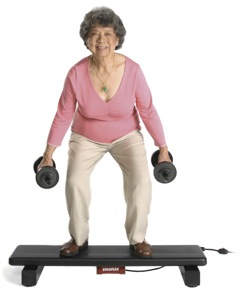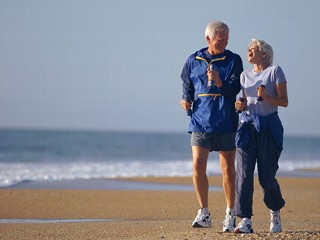
“Nothing is impossible.”
-Master Tao Porchon-Lynch
Becky Behling is a Guild Certified Feldenkrais practitioner, in full standing with the Feldenkrais Guild of North America | Manhattan, Kansas

-Master Tao Porchon-Lynch
 Delayed onset muscle soreness (DOMS) is a specific type of discomfort in the muscles. It was previously believed that a “build up” of lactic acid in the muscles was responsible for DOMS. However, research now shows that lactic acid is removed from muscles within an hour after exercise.
Delayed onset muscle soreness (DOMS) is a specific type of discomfort in the muscles. It was previously believed that a “build up” of lactic acid in the muscles was responsible for DOMS. However, research now shows that lactic acid is removed from muscles within an hour after exercise.
More recent studies demonstrate that physical activity beyond the current ability of muscles to meet the demand result in a type of trauma to muscle fibers themselves. This overload creates “microtears” in the muscle fibers. It is characterized by increased
plasma enzyme activity.
DOMS typically increases during the first 24 hours after activity and peaks at about 48 hours. During that time, the muscle fibers then repair themselves by increasing in size and becoming stronger. As your body adapts to new levels of physical activity, you will notice that DOMS is less frequent, but your strength, stamina, and flexibility all are improving. To optimize the results of physical activity and reduce injury risk, take exceptional care to optimize your nutrition and rest.
As you become more physically activity, you will learn to attend to and differentiate the sensations you experience during and after physical activity. You can be assured that DOMS is not associated with long term muscle damage or reduction in function. However, do contact your health care provider immediately if you experience:
 Let’s now look at resistance training, the part of the ACSM guidelines that cover muscle strengthening.
Let’s now look at resistance training, the part of the ACSM guidelines that cover muscle strengthening.
…any exercise that increases muscle strength and stamina. Stronger muscles that can sustain activity are crucial for successful aging. Strength and stamina increase our resiliency in meeting the daily demands of life.
All of you! Think about the parts of your body you use most frequently during the day:
Our bodies thrive on variety, and variety in exercise can keep physical activity fresh, even exciting. Our brains enjoy variety, too, and will develop new neurons whenever we are learning new things. Known as neurogenesis, this is an ongoing process that occurs throughout life
This is great news if you are not physically active now. It is all right to start with low intensity resistance training. The important thing is that you get active in a meaningful way so you can stay active and gain strength and stamina.
The ACSM suggests you complete at least two full sets of resistance exercises with repetitions that are appropriate for your current status and for your personal goals.
In the next few days, visit a fitness facility or two. You will likely get a tour and certainly a sales pitch. Learn about programs and staff focusing on the specific needs of older adults. Ask for a complimentary pass for several days to try out the classes and meet with a responsive personal trainer. Hang out for a couple of hours to get a feel for how the staff and members behave. HAVE FUN!!
Next post covers muscle phenomenon known as “delayed onset muscle soreness”. After that follows details of developing a resistance training program.
Gradual progression involves continuing to parse the cardiorespiratory (aerobic) section of ACSM guidelines from the Position Statement, the next two points read:
To develop cardiorespiratory fitness:
Cardiorespiratory exercise is also known as “aerobic” exercise. It is rhythmic, continuous physical activity using the large muscles of the body to stimulate your metabolism by simultaneously raising heart and breathing rates. As a result, more blood is circulated throughout the body and to the heart.
Large quantities of oxygen are needed with aerobic exercise. Walking, jogging, water aerobics, swimming, skating, cross country skiing, bike riding, rowing, and dancing are all activities that can be aerobic. In a fitness facility, aerobic equipment includes elliptical
trainers, treadmills, stair mills, stationary bicycles (upright and recumbent), spin bicycles, and rowing machines. Aerobic classes may include cardio combo, low impact, Zumba, and others.
Intensity refers to the amount of effort you put out during exercise. ACSM guidelines suggest cardiorespiratory exercise that is moderate or vigorous. There is a simple way to assess exercise intensity known as Borg’s modified 10-point scale of perceived
exertion (RPE, rate of perceived exertion). When you are active, occasionally rate how hard you are exercising. Moderate intensity activity is rated 5-6 and produces noticeable increases in heart rate and breathing. Vigorous intensity activity is rated 7-8 and produces large increases in heart rate and breathing. As your cardiorespiratory stamina improves, your RPE will change.
Knowing your RPE is helpful in several ways:
 The American College of Sports Medicine “is the largest sports medicine and exercise science organization in the world.” The group was established in 1954 and “is dedicated to advancing and integrating scientific research to provide educational and practical applications of exercise science and sports medicine.” (click here for reference) Among the initiatives of the ACSM is the “Exercise Is Medicine” program to promote physical activity for preventing disease and improving health.
The American College of Sports Medicine “is the largest sports medicine and exercise science organization in the world.” The group was established in 1954 and “is dedicated to advancing and integrating scientific research to provide educational and practical applications of exercise science and sports medicine.” (click here for reference) Among the initiatives of the ACSM is the “Exercise Is Medicine” program to promote physical activity for preventing disease and improving health.
The ACSM has an ongoing effort to review relevant research and modify its guidelines for quantity and quality of physical activity and exercise. These guidelines cover people of all ages and abilities as well as people with disabilities. Dr. Carol Ewing Garber, chair of the writing committee, said:
The scientific evidence we reviewed is indisputable. When it comes to exercise,
the benefits far outweigh the risks. A program of regular exercise – beyond the
activities of daily living – is essential for most adults. It is no longer enough to
consider whether an individual engages in adequate amounts of weekly exercise.
We also need to determine how much time a person spends in sedentary
pursuits, like watching television or working at a computer.
Here are the basic recommendations for adults up to age 65:
Stay tuned as the next few blogs will parse these guidelines!
 Dr. Len Kravitz is the program coordinator for exercise science and researcher at the University of New Mexico, He succinctly summed up research evidence to share the top 25 health benefits linked with regular physical activity and exercise. Dr. Kravitz grouped some of the benefits together “because of their physiological or metabolic associations”. Exercise is medicine!
Dr. Len Kravitz is the program coordinator for exercise science and researcher at the University of New Mexico, He succinctly summed up research evidence to share the top 25 health benefits linked with regular physical activity and exercise. Dr. Kravitz grouped some of the benefits together “because of their physiological or metabolic associations”. Exercise is medicine!
At some point in our lives, we have been admonished by others, and frequently by our own selves, to "stand up straight". Like me, you may have even agreed to a postural assessment that revealed a … [Read More...]
“Movement is life. Life is a process. Improve the quality of the process and you improve the quality of life itself.” ~Moshe Feldenkrais This concept of "movement is life" is a foundational … [Read More...]